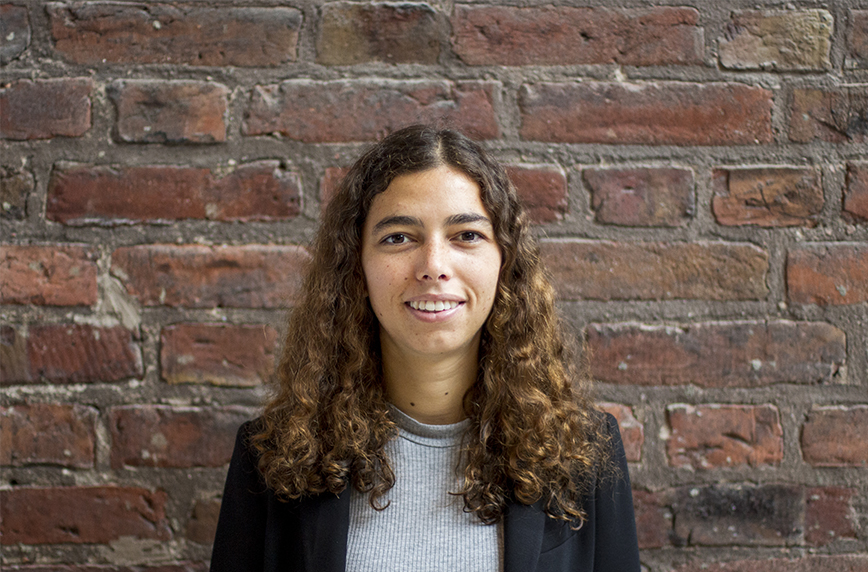I have become deeply committed to Nordic architectural traditions
Nada grew up in Egypt and then moved to the UK to do her undergraduate studies at the University of Nottingham. She loves climbing, listening to jazz and exploring Sweden’s nature.

Why did you choose this master’s programme at KTH?
I first moved to Stockholm to do my internship after completing my undergraduate studies in the UK. I had a great experience at the office in which I worked in Stockholm and participated in many exciting projects. I particularly loved the atmosphere in the office and felt that the team had a great work-life balance. I wanted to continue my education in a university at which I could find a similar attitude to work, as well as continue to immerse myself in Nordic culture. I was therefore immediately drawn to KTH, where I was confident I would find this.
I have become deeply committed to Nordic architectural traditions based on welfare and social responsibility and aspire to create places that are socially, economically and environmentally sustainable – places that can make our lives healthier and give people pleasure – and felt that KTH would offer me a chance to work towards this.
What are the best aspects of your programme?
The diversity you find in the Studio and Seminar courses is wonderful. You get to choose between approximately 10 courses, meaning there is something for everyone. The Studio options include varied approaches from hands-on building to very technological ones. Each Studio option also has a subject focus and addresses a chosen topic.
Have you chosen a specialisation track within the programme? If Yes, which track and why?
There are no tracks in this course.
What are your favourite courses thus far?
Our Studio course is really interesting. In my first semester I was part of the design studio ‘Infrastructural Cares’ in which we approached contemporary environmental and socio-political issues utilising ideas in care ethics and affect theory.
In the second semester I joined ‘Studio Making’ in which we produced a series of abstract models and utilised them as design agents. We designed and built wood and fabric pavilions in pairs for a bakery in the southern part of Stockholm. In our second project, we turned to our personal passions and views for design guidance. We drafted a manifesto and were challenged to produce an architecture that was consistent with our beliefs.
I also really enjoyed both my seminar courses. In my first semester I chose the seminar course ‘Restoration’ on which we were introduced to historical and theoretical perspectives on the development of the professional field of architectural restoration, with a focus on the Swedish context. I chose ‘Housework’ for my second seminar course. Here, we developed our critical reading and writing skills as we explored questions of care and maintenance. We studied the full life cycle of buildings, including how they work and what happens to them after they have been built. This seminar was an eye-opener for me and I feel like it articulated issues I hadn’t previously considered that I am now giving attention to in my design work.
How do studies at KTH differ from your previous studies?
I feel like it has been a smooth transition from my undergraduate studies in the UK to here. The main distinction between my undergraduate studies and my master’s degree at KTH is the difference in courses. More freedom is generally offered at master’s degree level.
How is student life in Stockholm?
Student life starts with the welcoming events organised by THS, the student’s union. These events shed light on all the great things you can do in Stockholm. THS organises a great variety of events in which you get to meet the international community at KTH. There are also many events that go on all year, and lots to see and do – music and arts festivals, as well as cultural venues and museums. There are many places of particular interest to architecture students, such as Skogskyrkogården or the public library. The tranquillity of the city and closeness to nature in Stockholm is very enjoyable. There are lots of parks and nature reserves right in the city, as well as places that make for a great day trip, such as the Stockholm Archipelago. The public transport system is excellent, although the city is small enough that you can cycle to almost anywhere. A drawback is that the city is relatively expensive when it comes to cafes and restaurants.
How would you describe your time at KTH so far?
My studies so far have been interesting and rewarding. I feel the university is caring and all-embracing and I’ve found that all the teachers are great mentors. I also find a great work-life balance and have had time for my hobbies, as well as exploring in and around the city. I am happy with the work I’ve produced during my time here and feel like I’ve had the flexibility to explore exactly the topics and ideas that I am interested in.
What do you want to do after graduating?
I hope to get some hands-on experience in a design and build project somewhere, possibly in a suburban area.
What would you like to say to students thinking of choosing KTH for their master’s studies?
I would describe the teaching at KTH as being fair, open minded and encouraging. The programme offers a lot of flexibility and gives you the opportunity to focus on your interests, as well as discover new ones. There is a good work-life balance, and for an architecture school, it is relatively stress free. There is a wonderful community of students and teachers and it’s a place in which you can make life-long friends. I would wholeheartedly recommend that you choose KTH for your studies and wish you a great experience!

